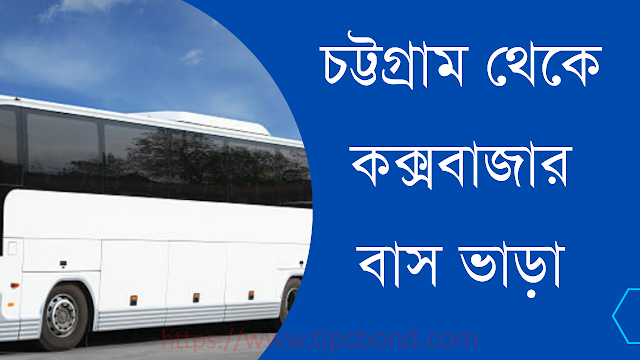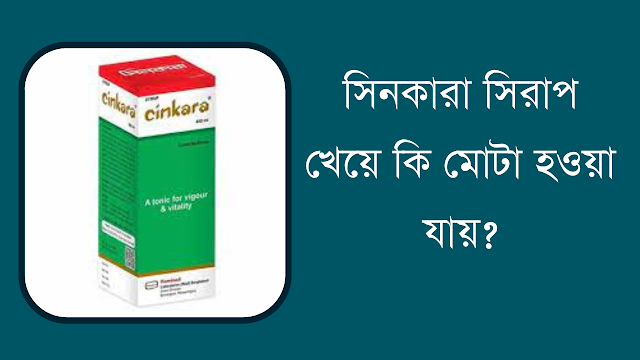The Ultimate No-Equipment Workout: Build Strength Anywhere, Anytime
Can You Build a Home Gym Without Equipment?
Well, what even is a "home gym" if there’s no equipment? Isn’t that just… a floor? Yeah, kinda. But a home gym isn’t really about machines or weights—it’s about having a space where you can work out without excuses. You don’t need dumbbells if you’ve got gravity, and you don’t need a squat rack if you’ve got, well… legs.
What Are Some Actually Effective No-Equipment Workouts?
Introduction
Hook: You don’t need a gym or fancy equipment to get a great workout. All you need is your body.
Problem: Many people don’t have time to go to the gym or access to equipment.
Solution: This guide shows you how to work out using just your body weight—no equipment required.
Hook: You don’t need a gym or fancy equipment to get a great workout. All you need is your body.
Problem: Many people don’t have time to go to the gym or access to equipment.
Solution: This guide shows you how to work out using just your body weight—no equipment required.
Why Choose No-Equipment Workouts?
Convenience: Work out from home, the park, or even while traveling. No gym or equipment needed.
Effectiveness: Bodyweight exercises are proven to be just as good as using gym equipment to build strength and fitness.
Versatility: These workouts can be adapted for all fitness levels—whether you’re just starting or already fit.
Convenience: Work out from home, the park, or even while traveling. No gym or equipment needed.
Effectiveness: Bodyweight exercises are proven to be just as good as using gym equipment to build strength and fitness.
Versatility: These workouts can be adapted for all fitness levels—whether you’re just starting or already fit.
Best No-Equipment Exercises
Full-Body Exercises
Push-ups: Work your chest, shoulders, and triceps.
Burpees: A great full-body exercise that boosts cardio.
Mountain Climbers: Get your heart rate up and burn calories.
Plank: Build core strength and stability.
Jumping Jacks: A full-body cardio exercise that’s great for warm-ups.
Lower Body Exercises
Squats: Strengthen your legs and glutes.
Lunges: Improve balance and tone your legs and glutes.
Glute Bridges: Focus on your glutes and hamstrings.
Step-ups: Strengthen legs and improve balance using a sturdy surface.
Wall Sit: An endurance exercise that works your quads.
Upper Body Exercises
Tricep Dips: Use a chair or bench to tone your triceps.
Shoulder Taps: Engage your shoulders and core.
Plank Shoulder Taps: A great way to work your shoulders and core.
Supermans: Strengthen your lower back and glutes.
Core Exercises
Leg Raises: Target your lower abs.
Bicycle Crunches: Work your obliques and upper abs.
Russian Twists: Focus on your obliques for a sculpted core.
Flutter Kicks: Tone your lower abs.
Side Planks: Strengthen your obliques and core.
Full-Body Exercises
Push-ups: Work your chest, shoulders, and triceps.
Burpees: A great full-body exercise that boosts cardio.
Mountain Climbers: Get your heart rate up and burn calories.
Plank: Build core strength and stability.
Jumping Jacks: A full-body cardio exercise that’s great for warm-ups.
Lower Body Exercises
Squats: Strengthen your legs and glutes.
Lunges: Improve balance and tone your legs and glutes.
Glute Bridges: Focus on your glutes and hamstrings.
Step-ups: Strengthen legs and improve balance using a sturdy surface.
Wall Sit: An endurance exercise that works your quads.
Upper Body Exercises
Tricep Dips: Use a chair or bench to tone your triceps.
Shoulder Taps: Engage your shoulders and core.
Plank Shoulder Taps: A great way to work your shoulders and core.
Supermans: Strengthen your lower back and glutes.
Core Exercises
Leg Raises: Target your lower abs.
Bicycle Crunches: Work your obliques and upper abs.
Russian Twists: Focus on your obliques for a sculpted core.
Flutter Kicks: Tone your lower abs.
Side Planks: Strengthen your obliques and core.
How to Build Your No-Equipment Workout Routine
Warm-Up: Start with 5-10 minutes of easy activity like jumping jacks or light jogging to warm up your body.
Sample Routine: A simple plan to get you started:
Day 1 (Full-Body): Push-ups, squats, mountain climbers, plank, jumping jacks.
Day 2 (Lower Body): Lunges, glute bridges, wall sit, step-ups.
Day 3 (Core and Upper Body): Bicycle crunches, side planks, tricep dips, supermans.
Progression Tips: As you get stronger, try adding more sets or reducing rest time between exercises.
Warm-Up: Start with 5-10 minutes of easy activity like jumping jacks or light jogging to warm up your body.
Sample Routine: A simple plan to get you started:
Day 1 (Full-Body): Push-ups, squats, mountain climbers, plank, jumping jacks.
Day 2 (Lower Body): Lunges, glute bridges, wall sit, step-ups.
Day 3 (Core and Upper Body): Bicycle crunches, side planks, tricep dips, supermans.
Progression Tips: As you get stronger, try adding more sets or reducing rest time between exercises.
Benefits of No-Equipment Workouts
Muscle Toning: Build and tone muscles without weights.
Flexibility & Balance: Many bodyweight exercises also help with balance and flexibility.
Fat Loss: High-intensity bodyweight exercises can help burn fat.
Convenience: No need for the gym—work out wherever you are.
Muscle Toning: Build and tone muscles without weights.
Flexibility & Balance: Many bodyweight exercises also help with balance and flexibility.
Fat Loss: High-intensity bodyweight exercises can help burn fat.
Convenience: No need for the gym—work out wherever you are.
Common Mistakes to Avoid
Poor Form: Always focus on good form to avoid injury.
Skipping Warm-ups: Not warming up can increase the risk of injury.
Overtraining: Give your muscles time to recover—rest is important.
Poor Form: Always focus on good form to avoid injury.
Skipping Warm-ups: Not warming up can increase the risk of injury.
Overtraining: Give your muscles time to recover—rest is important.
Conclusion
Encouragement: Bodyweight exercises are for everyone. No matter your fitness level, you can start today and improve.
Call to Action: Start your no-equipment workout routine today to build strength and improve your health.
Encouragement: Bodyweight exercises are for everyone. No matter your fitness level, you can start today and improve.
Call to Action: Start your no-equipment workout routine today to build strength and improve your health.
Is a No-Equipment Home Gym Actually Better Than a Real Gym?
Depends. Do you like waiting for some guy to finish his third “working set” while he texts? No? Then yes, home gym is better. But also, no, because progressive overload (fancy way of saying "make it harder over time") is limited when you're just lifting your own body. You can only do so many variations of push-ups before you hit a wall. Unless you start strapping books to your back.
What’s the Most Important Thing for a Home Gym Without Equipment?
Space. Not like NASA space, just...enough room to actually move. A 2x2m area is fine. Also, motivation, but no one wants to hear that.
Can You Build Strength Without Weights?
Yes, but also no. You can get strong, but if you want to be built like a tank, at some point, you’ll need to add resistance. Backpack full of books? Sandbag? Your own furniture? (Don’t actually do that, unless you want broken furniture.
FAQ:
How many sets/reps should I do for each exercise?
Answer: The number of sets and reps depends on your fitness level. If you're just starting, try 2-3 sets of 8-12 reps. As you get stronger, increase to 3-5 sets and 12-20 reps. For endurance, aim for higher reps with less rest between sets. If you're aiming for strength, go for lower reps (6-8) with longer rest.
Answer: The number of sets and reps depends on your fitness level. If you're just starting, try 2-3 sets of 8-12 reps. As you get stronger, increase to 3-5 sets and 12-20 reps. For endurance, aim for higher reps with less rest between sets. If you're aiming for strength, go for lower reps (6-8) with longer rest.
Can I build muscle with no-equipment exercises?
Answer: Yes! Bodyweight exercises can help build muscle, especially if you challenge yourself over time. Try increasing the number of sets and reps as you progress, or do harder versions of exercises (like decline push-ups or pistol squats). While they may not be as intense as weightlifting, they still engage your muscles effectively.
Answer: Yes! Bodyweight exercises can help build muscle, especially if you challenge yourself over time. Try increasing the number of sets and reps as you progress, or do harder versions of exercises (like decline push-ups or pistol squats). While they may not be as intense as weightlifting, they still engage your muscles effectively.
How often should I do no-equipment workouts?
Answer: Aim for 3-5 workouts a week for the best results. You can alternate between full-body, upper body, lower body, and core exercises. Make sure to take at least 1-2 rest days each week to give your muscles time to recover. On rest days, you can do light activities like walking or yoga if you like.
Answer: Aim for 3-5 workouts a week for the best results. You can alternate between full-body, upper body, lower body, and core exercises. Make sure to take at least 1-2 rest days each week to give your muscles time to recover. On rest days, you can do light activities like walking or yoga if you like.







